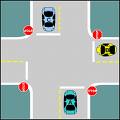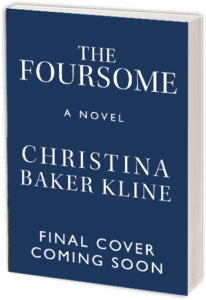 Back from Europe. Kids milling around the house until September 9th, when school finally starts. Basement fridge a horror. Weeds all over the yard. Mounds of laundry; an endless cycle of food shopping, preparing, clean-up. Sylvia Plath, Anne Sexton: I’m thinking of you.
Back from Europe. Kids milling around the house until September 9th, when school finally starts. Basement fridge a horror. Weeds all over the yard. Mounds of laundry; an endless cycle of food shopping, preparing, clean-up. Sylvia Plath, Anne Sexton: I’m thinking of you.
Guest Blog: New York Times Bestselling Author …
Pamela Redmond Satran on Making “The List”:
 When Christina asked me to write a guest blog about how it feels to be on the New York Times Bestseller List — my new humor book, How Not To Act Old, is #7 on the Paperback How To, Advice, and Miscellaneous for August 23 – all I could think was: I better write this fast.
When Christina asked me to write a guest blog about how it feels to be on the New York Times Bestseller List — my new humor book, How Not To Act Old, is #7 on the Paperback How To, Advice, and Miscellaneous for August 23 – all I could think was: I better write this fast.
Although I am determined not to be one of those people who complains about her success -“My book tour was so exhausting, and why was I #7 instead of #1?” – I have to admit that the experience of landing on The List for the first time in 17 books (or maybe 18 or 19; I really have lost track) is not total finger-snapping and blue skies.
Maybe that’s because I’m not really sure what this amounts to. Is it an extremely nice accolade that I will forevermore be entitled to couple with my name: New York Times Bestselling Author, kind of like Duchess, or Oscar winner? Or it is the first step – okay, the eighth or twenty-ninth – in the trajectory of the kind of book that changes not just your career, but your life?
I’m trying to stay in the moment here, but I can’t help looking at my company on the Bestseller List – at the skinny bitches and the guys who hope they serve beer in hell – and think: Jesus, those people cashed in. Their books are famous, they made wheelbarrows full of money, and maybe that will happen to me.
And then I have to go throw some salt over my shoulder, knock on some wood, and kiss the fang of a sabertooth tiger – whatever it takes to ward off the juju you attract by daring to think something good might really happen.
On the other hand, isn’t this one of those moments I should seize by being smart about my career, figuring out how to build on this success by doing the right book proposal, taking the right chances, making the most of this amazing piece of luck?
I’ve heard other people who made The List say it was the result of concerted effort over a long time by a lot of people, but I wouldn’t say that was true for me. The editor who bought my book and indeed my whole publishing division was disappeared mere months before my book came out. There was a protracted struggle over the cover of the book (I won), which made me question whether my publisher even understood the property and the market. I was assigned to a publicist who was on maternity leave until just a few months before the pub date, missing the deadline for all the long-lead magazines.
But the publicist turned out to be well worth the wait, the best I have ever worked with. I made a key first-serial sale myself, to the amazing Lesley Jane Seymour and Judy Coyne at More Magazine, the perfect venue for the book. Attention for the blog that launched the book – HowNotToActOld.com – sparked online sales that helped catapult the book onto the bestseller list right out of the gate.
And so now I have three more full days to enjoy having a book on the New York Times Bestseller List. And even if How Not To Act Old falls off the list on Wednesday evening, when the new roster is announced, it will still show up on the Bestseller List that’s in the actual newspaper next Sunday, which will give it a whole new boost and fresh visibility among thousands of book lovers and potential readers.
Ultimately I feel proud that this project, which I started because no one was interested in the magazine article, which I sold for a low advance to the only publisher who bid on it, which was orphaned and battered before rising to these heights, has achieved one of the most impressive commercial feats possible for a book. I plan to take full advantage of that feeling, for as long as it lasts.
Pamela Redmond Satran is the author of 18 books, including five novels (Younger, The Man I Should Have Married) and ten bestselling baby-naming books (Beyond Jennifer & Jason, Cool Names for Babies) coauthored with Linda Rosenkrantz. She and Linda are also the developers of baby-naming site nameberry. Pam cowrites The Glamour List, writes for The Daily Beast and The Huffington Post, and is the author of a book called 1000 Ways To Be A Slightly Better Woman. And, oh yes, she runs an 800-member social networking group called MEWS.
Quick Link: Four-Way Stop a Literary Inspiration
 Baristanet, a “hyperlocal” citizen-journalism blog in northern New Jersey run by veteran journalists Debbie Galant and Liz George, featured a piece this week on the original inspiration for Bird in Hand, which used to be called Four Way Stop.
Baristanet, a “hyperlocal” citizen-journalism blog in northern New Jersey run by veteran journalists Debbie Galant and Liz George, featured a piece this week on the original inspiration for Bird in Hand, which used to be called Four Way Stop.
Here’s the story — part of it, anyway — of the title change:
When my husband and I moved to Montclair after years of living on the Upper West Side, one of our first purchases was a minivan. I hadn’t driven in years, much less an unwieldy, seven-seat bus, and I was filled with anxiety. Traffic can be fast and unforgiving; caught in the maze of unfamiliar roads, I was constantly losing my bearings. My children’s lives were in my hands – my white-knuckled hands, that is, gripping the steering wheel.
This quiet terror propelled me into writing my new novel, which was called, until recently, Four Way Stop. Four-way stops had always struck me as quaint, something you might find out in farm country, but I began to see them all over the place in New Jersey. (In fact, Montclair recently installed them near many schools.) As traffic situations go, they strike me as oddly ambiguous: they require not only manners and mutual respect to work as they must, but a basic knowledge of the rules. What happens when someone doesn’t understand – or follow – the rules?
In my novel the central character, Alison, gets into an accident at a four-way stop in which a child dies. This accident changes the (interconnected) lives of four people. Somewhere along the way I realized that I was writing this book as a way of exploring my deepest fears around this subject – and that those fears were too close. I put the manuscript in a drawer and only came back to it after several years, when my children were older and my worries had subsided. (For one thing, I’d become a fairly competent driver.) And I broadened the scope of the novel: the accident became a catalyst for the larger story rather than the story itself. As the book took shape, I replaced the title with one that better fit the emerging story: Bird in Hand. I’d come to terms with the four-way stop. It was time to move on.
Quick Link: My Ten-Year Overnight Success
![]() As someone who loves to read other people’s personal essays but has a hard time being so candid herself, I am kind of proud of myself for writing an honest piece for SHE WRITES, a new social networking site for writers, on the long journey to publication for Bird in Hand. SHE WRITES is a place where, as founding editor Kamy Wicoff explains, “women writers working in every genre — in every part of the world and of all ages and backgrounds — can come together in a space of mutual support.”
As someone who loves to read other people’s personal essays but has a hard time being so candid herself, I am kind of proud of myself for writing an honest piece for SHE WRITES, a new social networking site for writers, on the long journey to publication for Bird in Hand. SHE WRITES is a place where, as founding editor Kamy Wicoff explains, “women writers working in every genre — in every part of the world and of all ages and backgrounds — can come together in a space of mutual support.”
Publication Day for Bird in Hand
Publication Day, I’ve learned over the years, is an elusive concept. You imagine that something momentous will happen — after all, the date has been printed in catalogs and announced on amazon.com; it seems significant. You think of other important events in your life: college graduation, your wedding day, the birth of your first child. Things actually happened on those days. You were awarded an official degree in front of several thousand people, you suddenly found yourself yoked for life to another person, you loosed a new human on the earth.
 So what do you expect for pub day? Oh, not much. Maybe just some triumphal music, mortarboards tossed in the air, a parade with marching bands, a few fireworks.
So what do you expect for pub day? Oh, not much. Maybe just some triumphal music, mortarboards tossed in the air, a parade with marching bands, a few fireworks.
A novel appears in hardcover about a month before the pub date. It sits in boxes in your publicist’s office before making its way, with a pitch letter tucked under its flap like a schoolboy with a note in his pocket, to reviewers and others who will, you hope, help it on its way. So pub date is kind of irrelevant. Except in the ways that it isn’t. For example, glossy monthly magazines will review books in September if the pub date is after August 10th. Amazon calls any book bought before pub date a “pre-order,” and it’s not immediately available. Bookstores usually put it on shelves (or, if you’re lucky, on tables) on the official day.
But none of that has much to do with the author. I’ve come to understand that pub day is a rough marker, a general concept. And I’ve learned to view the day as a time to reflect on my own journey in publishing a book. It may not be a warm bundle in my arms, but the weight of my book in my hand, with its smooth pages and pulpy scent, makes me swoon all the same.

